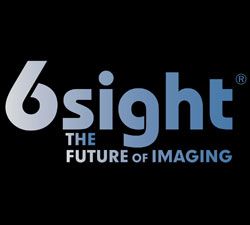
After many years in Monterey, this year’s 6Sight: The Future of Imaging conference relocated to San Jose and, as usual, offered a cornucopia of ideas for the participants to wrestle with.
Cohosts were the PMA, Future Image and the AIE (Association of Imaging Executives), the last of which kicked off the conference with a series of presentations about printing and photofinishing. I’m old-school, having once (decades ago) managed Hanimex’s labs in Australia and New Zealand, but even I have been caught by the bug of electronic viewing and storage, so I was keen to see where printing is heading.
Marion Knoche from GfK Nuremberg assured the assembled throng that there are positive trends for “our” products, with a 19 percent growth in the total imaging sector for this year, but there is no growth in overall printing. Home printing is declining, and kiosk printing is passing it, but the 800-pound gorilla (my words not hers!) is Facebook (especially amongst younger people?) Alas, most Facebook users do not realize their images are being stored in such low-res files they are virtually unprintable if retrieved later for that purpose. Remember there are over 500 million Facebook users!
Don Franz of Photo Imaging News then showed us that image-capture from digital cameras is flattening out, but cameraphone capture is taking over, so total image capture is still growing. There is excitement in the photo book sector, especially as they are getting ever easier to make. Soft-copy photo books (eg, on DVD) are also growing.
Liz Cutting of The NPD Group assured us that “nonprinting” is declining and that there is more interest in printing by young people (phew!); DSLR owners print most.
Steve Hoffenberg of Lyra Research described a 30-day “print window” after capture…print then or never. Some 12 percent of people say they print half or more of their images, especially moms and active hobbyists. Almost NO cameraphone images get printed in North America (Asia Pacific is the leader in that category). Online ordering with retail pickup is growing for prints, as is online ordering with home delivery for photo books.
Ron Glaz of IDC said that Facebook receives 3 billion images a month from its users (Flickr gets 90 million).
On to “Output from a Vendor’s Perspective,” initiated by the loquacious Ed Monahan from Kodak, who professed that the average American household spends $350 to $450 a month to bring content into the home (eg, cable TV).
I was intrigued to see Memjet resurface after a few years of relative silence; they now have a printer that spits out an 8×10 print in two seconds (see later).
Day 2 of the conference was highlighted by Professor Blair Macintyre of Georgia Tech, who led us into the world of Augmented Reality (AR), which has particular relevance in the arenas of medicine, military, games and sports. AR must be mobile for the best effect. The ensuing panel stated that AR is “imaging plus information” intertwined visually, with such applications as factory planning, furniture location, retail kiosks (eg, trying clothes on virtually).
Next was an informative cluster about smartphones, almost all of which have built-in cameras. We’re buying a billion cameraphones a year worldwide, and these are obviously capturing untold billions of images—almost none of which are printed! Eeek! (Are users happy just watching them on the phone itself, or a computer or an HDTV?) Obviously, the hardcopy output side of imaging is under constant threat.
The sheer length of the conference (almost three days) obviates my ability to cover it all in a short article, so I’ll skip along to a few highlights. Apologies to presentations I skip.
Memjet (memjet.com), you might remember, makes a fixed-head printer with 11 individual print heads in 10 rows with 70,400 ink nozzles across an 8.7-inch span, using 1.4 picoliter droplets in five colors. The paper advances at 12 inches per second (ips) for documents and 6.8 ips for color prints. I know that HP is interested to know how Memjet keeps the nozzles from clogging, because as you know a conventional printer swishes the printhead back and forth across the paper, thus self-cleaning. Memjet also has a 42-inch printer which uses five of the above printhead assemblies that are staggered both horizontally and vertically, raising interesting engineering challenges re synchronization. Memjet’s top banana is one Kia Silverbrook, said to now officially be the world’s most prolific inventor measured by issued patents. I met him once; he ignored me. How inventive!
Another eye-catcher was a company called Tracer (tracer1.com), who uses a laminated lenticular system to create prints that show three images as you twist them in your hand (flip-print), or a zoom function or motion or 3D. Years ago I consulted for a local company who tried this (the motion bit), but they could not automate the attachment of the lenticular so were doomed to failure. Tracer seems to have it licked.
Day 3 started with Professor Marc Levoy racing us into the world of the Frankencamera (http://graphics.stanford.edu), a fully programmable, open-source camera that can be upgraded, expanded or customized. Think of the Apple iPad, etc., and its apps.
There followed presentations on a new electronic film technology, QuantumFilm (invisageinc.com) and then the day progressed with panels on camera evolution, video, financial outlooks, etc. You had to be there!





